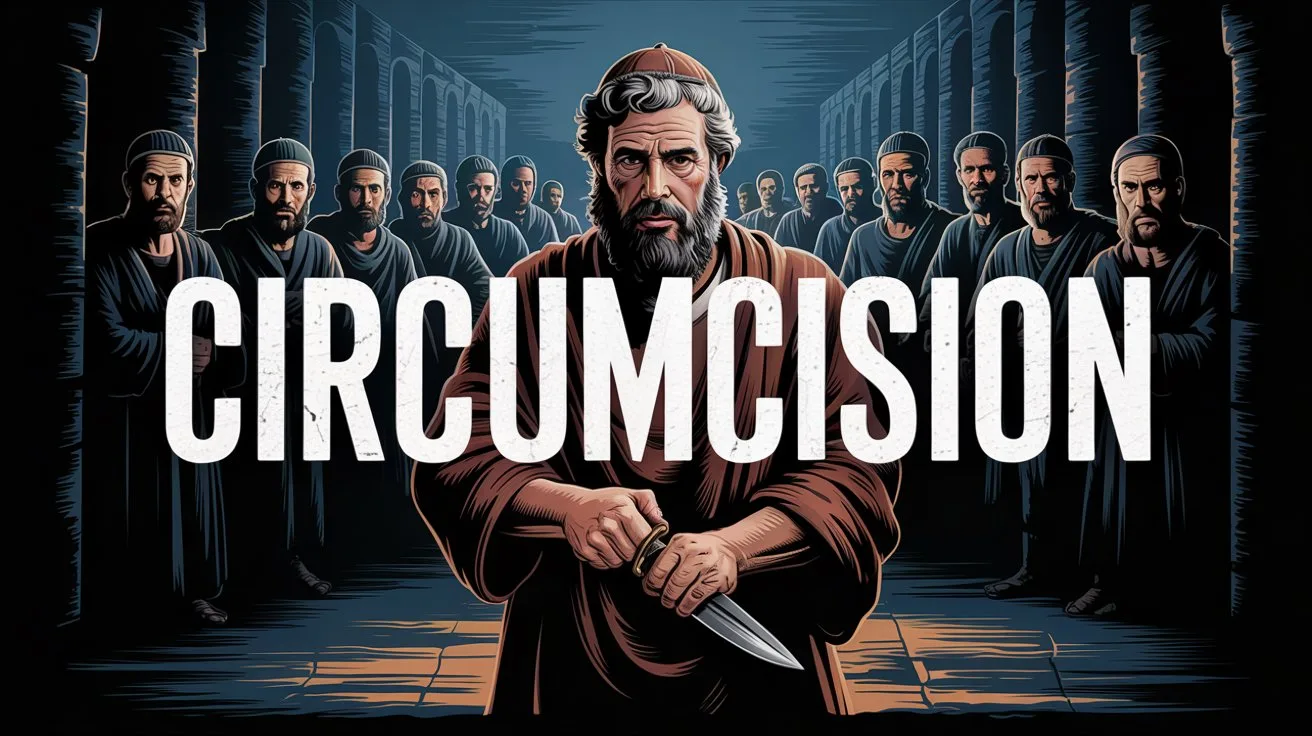Circumcision was first commanded by God to Abraham in Genesis 17:9–14. God established a covenant with Abraham and his descendants, saying,
“This is My covenant which you shall keep, between Me and you and your descendants after you: Every male child among you shall be circumcised” (Genesis 17:10).
It was to be done on the eighth day, a perpetual sign in the flesh that they belonged to the LORD. This was not a cultural tradition or health ritual: it was a command from God. It marked them as separated from the nations, set apart for God. The LORD said,
“My covenant shall be in your flesh for an everlasting covenant” (Genesis 17:13).
This practice continued with Isaac in Genesis 21:4, then with the children of Israel. Even Moses, though called to lead, was nearly killed by the LORD when he neglected to circumcise his son (Exodus 4:24–26). God was serious about this sign; it was a matter of covenant obedience.
The Purpose of Physical Circumcision
It represented more than a physical mark. In Deuteronomy 10:16, God commands,
“Therefore circumcise the foreskin of your heart, and be stiff-necked no longer.”
And again in Deuteronomy 30:6,
“And the LORD your God will circumcise your heart and the heart of your descendants, to love the LORD your God with all your heart and with all your soul, that you may live.”
This reveals that the act was always meant to be a symbol of a deeper spiritual truth: separation from the flesh and full devotion to God. But under the Law, the physical sign remained necessary for inclusion in the covenant community.
Circumcision in the New Testament: A Spiritual Covenant
When we get to the New Testament, we see a clear transition. Circumcision of the flesh is no longer the covenant sign: it has been fulfilled in Christ. Paul makes this clear in Romans 2:28–29:
“For he is not a Jew who is one outwardly, nor is circumcision that which is outward in the flesh; but he is a Jew who is one inwardly; and circumcision is that of the heart, in the Spirit…”
Likewise, in Colossians 2:11–12, Paul writes,
“In Him you were also circumcised with the circumcision made without hands, by putting off the body of the sins of the flesh, by the circumcision of Christ.”
This circumcision is not done by man; it is done by the Spirit, at the moment of salvation. The old man is cut away. He goes further in Galatians 5:6,
“For in Christ Jesus neither circumcision nor uncircumcision avails anything, but faith working through love.”
It is no longer about the mark on the body: it’s about the transformation of the heart. And again, in Philippians 3:3, Paul says,
“For we are the circumcision, who worship God in the Spirit, rejoice in Christ Jesus, and have no confidence in the flesh.”
The true circumcised are those who have died to the flesh and live by the Spirit.
Circumcision and the Judaizers
In the early church, this issue stirred great conflict. Some Jewish believers taught that Gentiles must be circumcised to be saved (Acts 15:1). But this was condemned at the Jerusalem Council. Peter stood and said,
“Now therefore, why do you test God by putting a yoke on the neck of the disciples which neither our fathers nor we were able to bear?” (Acts 15:10)
Paul dealt strongly with this in Galatians. He called it a perversion of the Gospel. In Galatians 2:3–5, even Titus, a Greek, was not compelled to be circumcised. Paul did not yield to them for a moment.
My Final Thoughts
Circumcision began as a sign of the covenant with Abraham: a physical mark of God’s chosen people. But even in the Old Testament, God pointed to something deeper, a circumcision of the heart. In Christ, that spiritual circumcision becomes reality. The flesh is cut away at the cross. We are made new. The law no longer binds us to the letter; we live by the Spirit.
So what does this mean for us today? We must not look to outward signs, rituals, or the works of the flesh for righteousness. Our circumcision is not in our bodies but in our hearts. We walk not according to the old man but according to the Spirit of God, fully surrendered, dead to sin, and alive to Christ. That is the true mark of the covenant now.





 Get the book that teaches you how to evangelize and disarm doctrines from every single major cult group today.
Get the book that teaches you how to evangelize and disarm doctrines from every single major cult group today.